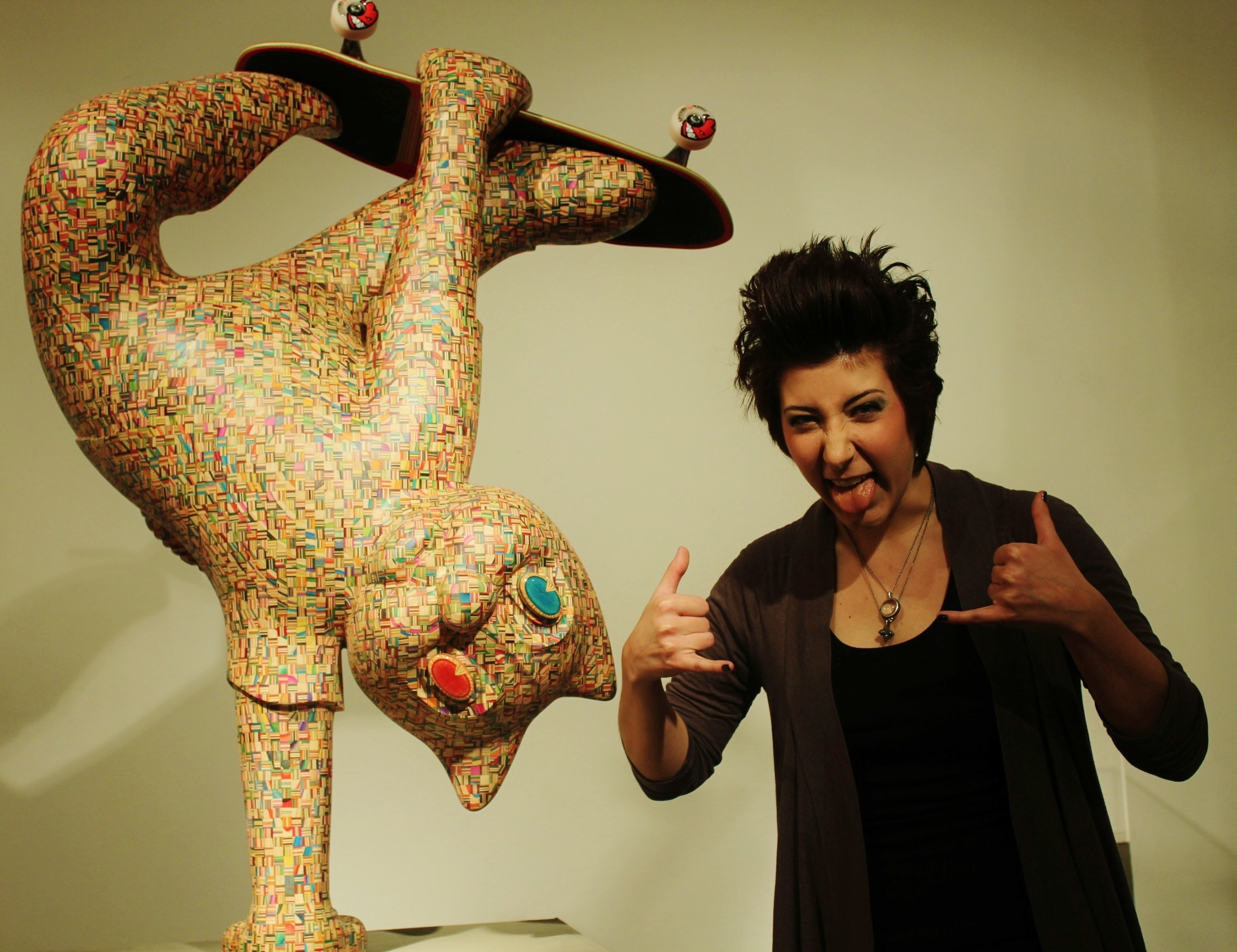empathy
Hang Loose: It’s A Wheeley Good Show

Nostalgia is in. Jonathan LeVine’s most recent exhibit, “Virtual Reality” by Haroshi, is proof of that. With brightly-lit tennis shoes, a wall full of skateboards, and happy-go-lucky figures composed of tie day bullets, this exhibit gives you PTSD flashbacks of your childhood happiness and trauma.
Reduce, Reuse, Recycle
The craftsmanship of the pieces alone makes this exhibit an impressive spectacle of human capability and imagination; Haroshi’s wood sculptures are comprised of layer after layer of old skateboard decks that have been masterfully cut and shaped to form beautiful, three-dimensional icons of the 1990’s and early 2000’s, mostly revolving around the skater scene.
However, the real power of Haroshi’s artwork lies more in its ability to elicit an emotional response than in its visual effect. While none of the images that Haroshi has constructed directly resemble figures prevalent during the formation of America’s skateboarding culture, they have strong connotations to symbols that extend far beyond the popular subgenre.
Cat Power
For instance, a near-discernible combination of Felix The Cat, Mickey Mouse, and Hello Kitty is one of the more dominant pieces of the gallery as this large feline executes a perfect handplant on its skateboard. Other pervasive images are a smiley face made entirely out of bullets that’s also hugely reminiscent of the famed yellow smiley face that has appeared on dozens of TV shows, movies, and ad campaigns; a standalone high-top shoe that epitomizes our generation’s (debatably temporary) obsession with the fashion that opposed the suit and tie; and skulls, devils, and demons outfitted with the latest accessories (grills, braces, and the need for glasses).

Haroshi was personally inspired by the American skateboarding scene over 20 years ago when he first encountered Plan B’s skating video, Virtual Reality, featuring Rodney Mullen. It’s no coincidence that his current exhibit shares the same name as this throwback video from the 90’s. In fact, it expands upon the freedom alluded to in the original title by inserting it into the context of the 21st century’s digital era, when virtual reality has more of an imprisoning connotation. Therefore, his exhibit begins to eat away at the very reality we’ve grown up on, hyperbolizing it into ridiculous fiction. Several smaller pieces illustrate this through injured figures shown leaning on crutches, and missing huge portions of 8-bit-sized blocks from their face and torso.
And the ultimate irony here is that even with a removed upbringing in Japan, Haroshi’s artwork is so powerful as an American artifact that its images are still able to translate beyond any two cultures.
- Jonathan LeVine – Haroshi “Virtual Reality” – Until Feb 9th, 2013 – Tues-Sat: 11am-6pm
Be the first to write a comment.
Your feedback
